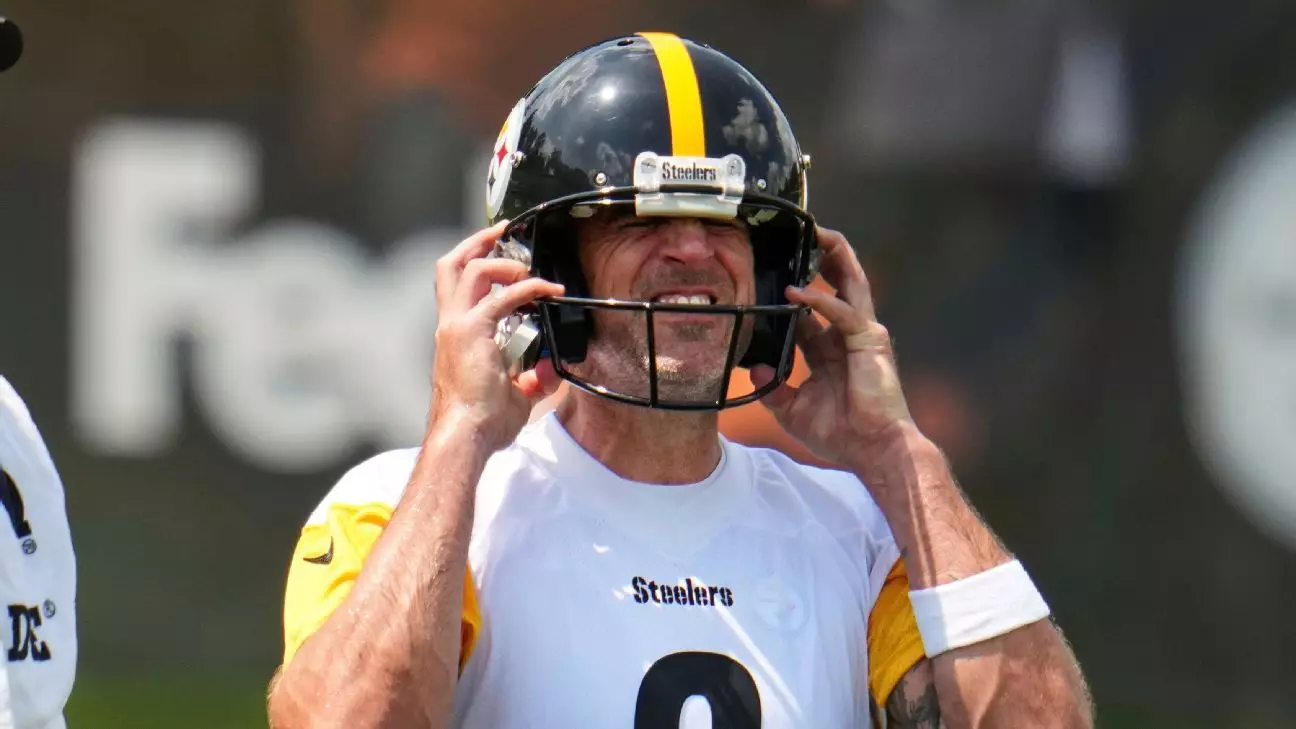In the modern NFL, innovation is often celebrated, but it can also serve as a double-edged sword. Aaron Rodgers’ current helmet dilemma exemplifies this tension perfectly. His long-standing preference for the reliable Schutt Air XP Pro line has been challenged by new safety regulations that rendered his familiar gear obsolete. While the league’s priority is player safety, this transition highlights how adjustments meant to protect can inadvertently cause discomfort, frustration, and identity shifts for veteran players. Rodgers’ outspoken dissatisfaction vividly underscores the human side of these safety advancements. To him, the helmet isn’t just equipment; it’s a symbol of continuity and familiarity—elements crucial to a quarterback’s confidence. His candid remarks about the helmet resembling a “spaceship” reveal a deeper frustration: the loss of personal comfort amidst the pursuit of safety standards. This scenario prompts NFL stakeholders to reevaluate how safety innovations are rolled out, balancing regulation with the athlete’s psychological and physical comfort.
The Human Cost of Transition: Aging Athletes and Adaptability
Rodgers’ discomfort underscores a broader truth—adapting to change becomes exponentially harder with age. As a seasoned veteran, he embodies the intersection of experience and resistance to disruptive modifications. His ongoing effort to find a suitable helmet illustrates the personal toll that these necessary updates can exact. For aging athletes, comfort and trust in equipment are intertwined with their confidence and performance. The inconvenience Rodgers faces illustrates the painful reality that progress sometimes demands concessions, even from those who have mastered their craft over decades. It raises an essential question: are safety standards designed with the athlete’s holistic well-being in mind, or are they primarily regulatory symbols that ignore individual comfort? His plight compels the league to consider not just safety metrics but also how change impacts veteran players psychologically and physically, especially when their routines are disrupted.
The Fragile Line Between Resilience and Injury
The incident involving Rodgers’ minor injury during practice may seem insignificant but reveals the fragile nature of an athlete’s condition. While the veteran quarterback managed to walk away with minimal damage, the very act of being stepped on—an accidental consequence in a high-contact sport—serves as a stark reminder of the persistent risks players face daily. Rodgers’ healed Achilles, now juxtaposed with a fresh bruise and scratches, illustrates the constant balancing act of resilience. Each practice, each play, is a test of durability, especially after major injuries that have already marked an athlete’s career. The NFL calls for mental toughness, but physical resilience becomes just as vital, if not more so, as players like Rodgers push through discomfort. This incident spotlights how even routine practice drills carry underlying dangers, challenging the myth of invincibility in professional sports.
The Silent Struggles of Rookie Development
Amidst Rodgers’ frustration lies the plight of the young quarterback, Will Howard, whose freak accident provides insight into the brutal realities faced by emerging talent. A promising sixth-round pick, Howard’s injury with a broken finger may set back his growth trajectory significantly. His unwavering desire to participate highlights the fierce determination of rookies eager to prove themselves under harsh circumstances. Yet, this eagerness often conflicts with their physical vulnerability, exposing a harsh truth: young athletes are often unprepared for the unpredictable nature of their development process. Howard’s injury may seem minor on paper, but it symbolizes the brutal path rookies tread—fraught with setbacks, unanticipated injuries, and relentless pressure to perform. His candid reflections about the injury as “freak” and his uncertainty about returning underscore how fragile emerging careers can be, making resilience a necessity not just for veterans, but for every athlete daring to start their NFL journey.
The Psychological Toll of Injury and Frustration
In professional football, injuries are more than physical setbacks; they are psychological battles that test mental fortitude. Rodgers’ dissatisfaction with his helmet, combined with his on-field injury scare, magnifies the mental strain players endure in pursuit of excellence. Frustration with gear, injuries, or game circumstances can erode confidence and heighten anxiety, especially for seasoned players who are accustomed to mastery. Likewise, Howard’s injury compounds this mental challenge—imposed by a freak accident that forces him into undesirable downtime. These athletes are not just battling their opponents but also grappling with internal doubts, fears of losing their edge, and uncertainty about their future contributions. This underscores an often-overlooked aspect of the sport: resilience isn’t solely physical but profoundly psychological. A seasoned NFL veteran and a rookie alike are fighting silent wars within—struggles that shape their mindset and, ultimately, their careers.
While the headlines often celebrate athletic prowess, behind the scenes, players like Rodgers and Howard exemplify the raw, unglamorous battle of resilience. From adapting to new safety gear to overcoming unexpected injuries, their stories underscore that professional sports demand more than talent—they require relentless mental toughness and adaptability. These athletes push through discomfort and setbacks, often with little acknowledgment, driven by an unwavering desire to succeed. Their struggles serve as a powerful reminder: the true strength of a professional athlete lies not solely in their physical abilities but in their capacity to endure, adapt, and emerge stronger from adversity. The steel of the NFL’s best players isn’t just in their muscles, but in their unyielding spirit amid the silent chaos of injuries, frustrations, and relentless change.


Leave a Reply